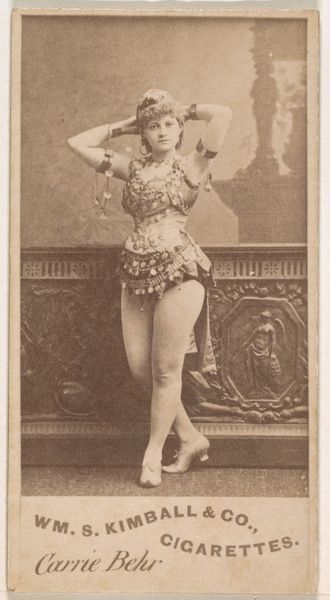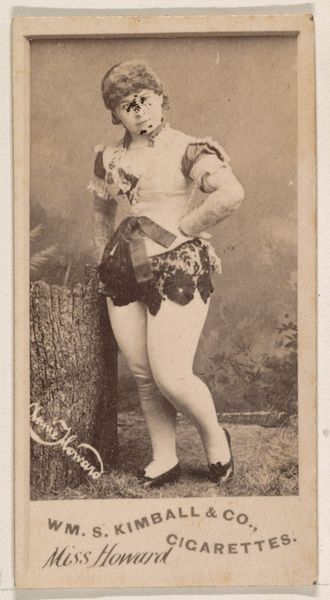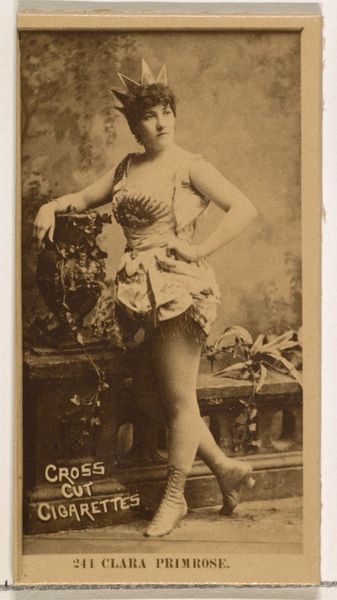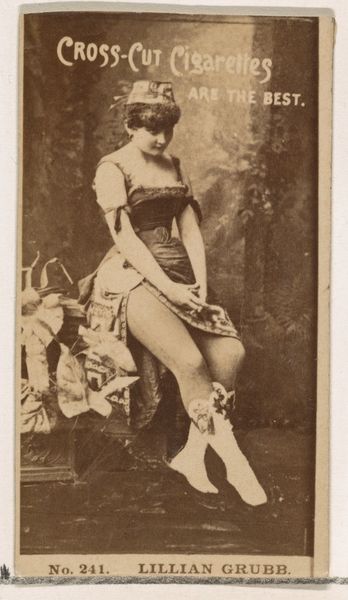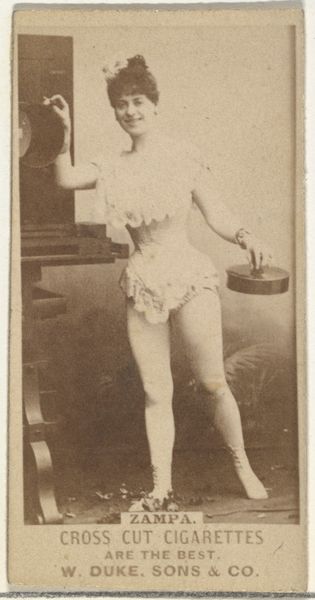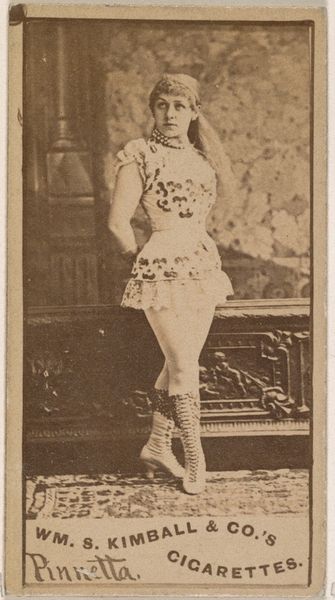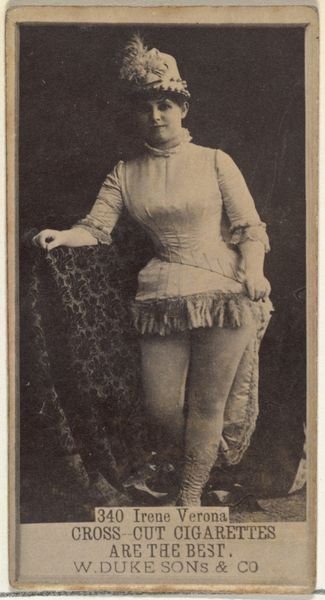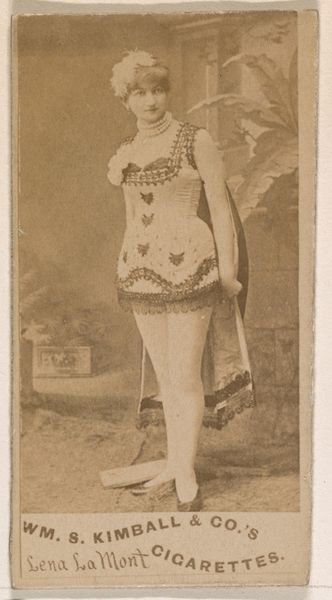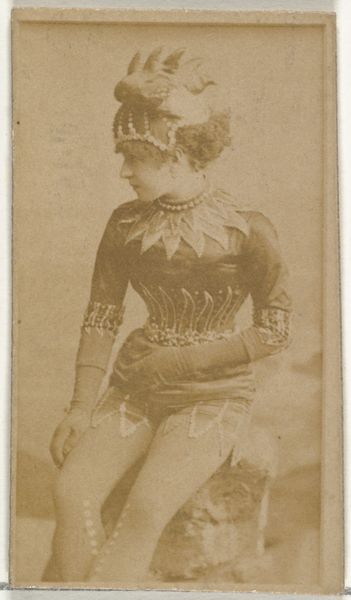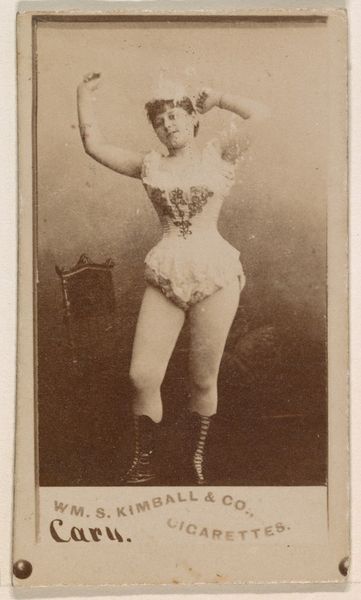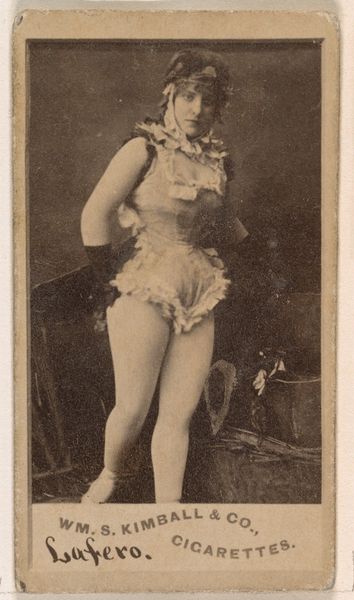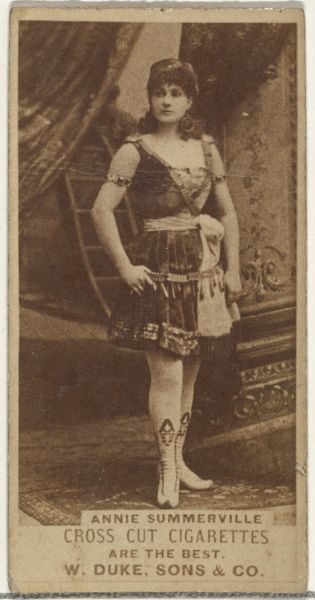
Card Number 219, Sutherland, from the Actors and Actresses series (N145-1) issued by Duke Sons & Co. to promote Cross Cut Cigarettes 1880s
0:00
0:00
drawing, print, photography
#
portrait
#
drawing
# print
#
photography
#
genre-painting
Dimensions: Sheet: 2 1/2 × 1 3/8 in. (6.4 × 3.5 cm)
Copyright: Public Domain
Curator: Here we have "Card Number 219, Sutherland, from the Actors and Actresses series (N145-1)" by W. Duke, Sons & Co., dating to the 1880s. It’s currently held at the Metropolitan Museum of Art. Editor: The sepia tone lends it an air of bygone days, almost like a tintype, doesn’t it? I notice the wear and tear, adding to the sense of history, it looks very material and I would like to know the exact print process they used at the time to create those cigarette cards! Curator: Precisely! These were indeed mass-produced trade cards, designed to promote Cross Cut Cigarettes. The series focused on actresses and actors. If we think of labor, imagine the assembly lines churning these out alongside tobacco production. A fascinating collision of consumer culture. Editor: Yes, but let’s consider the image itself. "Sutherland"—presumably the actress—poses with her hand resting on draped fabric. What statement is being made with this image? The draped chair has a strong ornamental scheme suggesting opulence and importance in the depicted persona. It all adds up to constructing a particular kind of popular idea surrounding theatre celebrities. Curator: That's keen insight. What does that say about the wider view of femininity and public persona that those companies attempted to encourage through imagery and celebrity endorsement? I suspect this symbol-infused image taps into aspirations of status for consumers of every class. Editor: Definitely! And also, in terms of status, in this case, it is tied directly to commerce; you only gain access to these idealized visions by consuming the product they peddle, as a cultural script rooted in power relations. By purchasing their goods one acquires the symbols that help one attain membership within an idealized collective. Curator: Well observed. Looking at the photograph, it's interesting to consider what we don't see – the actress off stage, outside this carefully curated persona. What would that labor have consisted of, day-to-day? Where did those "stars" shop and did their economic position ever reflect upon their representation on those mass consumption prints? Editor: And there is an inherent contrast that this highlights. These were distributed *inside* the cigarettes themselves, and eventually discarded once people consumed the content. In a way, one could claim that the representation would hold no more weight to the consumers than a cigarette itself. Curator: Exactly. A disposable icon, reinforcing that quick turnover, feeding cycles of capitalist production, fleeting stardom, all interwoven. Thank you! A new insight into materiality. Editor: Thanks to you too! Symbolism shows its real production contexts after all.
Comments
No comments
Be the first to comment and join the conversation on the ultimate creative platform.

